Vitara: A blast from the past
Suzuki goes back to the future with its impressive new Vitara and makes us feel all nostalgic in the process.
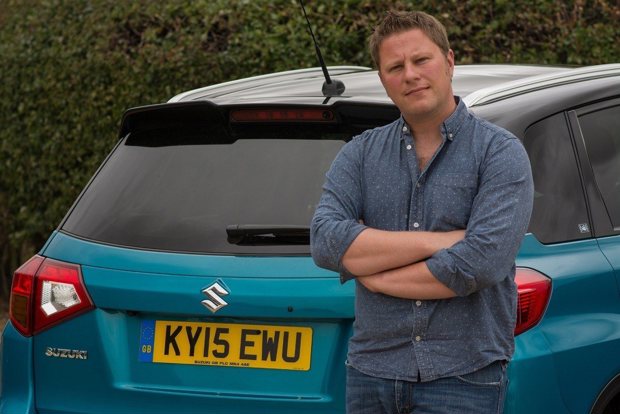
Date: 20 August 2015 | Current mileage: 2392 miles | Claimed economy: 50.4mpg | Actual economy: 46.4mpg
I’m going to start of this introductory Our Cars update with a confession. I have a bit of a soft-spot for Suzukis and the Vitara in general.
That’s because I grew up with them in the 1990s and spent my Saturdays working with my dad (pictured below), who was a Suzuki dealer in Kent. I’m not sure why I picked up such an affection, as many of my memories as a teenager involve winter mornings, mud-caked Vitaras and Samurais, a luke-warm bucket of water, sponge and a chamois.
In among the muck, suds and errands I picked up an encyclopedic knowledge of 1990s Suzuki models (and cars in general), which kick-started my love of cars and ultimately led to the career that I have today. It does mean that parts of my memory that should be devoted to trigonometry and algebra have been given over to paintcodes, specs and details of long forgotten and obscure Suzuki special editions. Like a human Google, only useless.
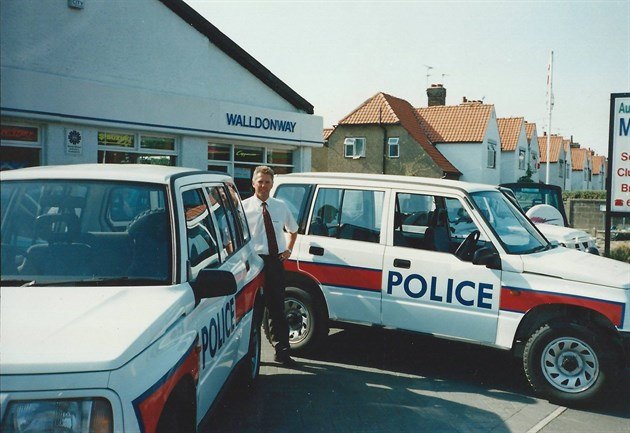 |
| My dad in the mid-1990s. These Vitaras were destined for the Falklands Police Force |
Vitara Rossini? That’s the pink special edition soft-top with a white leatherette interior and matching roof (there was also one in bright green called Verdi) Vitara Mustique? That was white with a special ‘tropical-themed’ wheel cover and special body graphics, which partnered the Samurai Tobago, which was similarly decked-out. I could go on, but thankfully for you I’ll stop there.
Should I ever appear on Mastermind, Suzuki special editions of the 1990s is likely to be my specialist subject.
Anyway, enough of my trip down memory lane. What’s the deal with the latest Vitara? This model went on sale earlier in the year and has dropped the “Grand” part from it its name. It is - once again - simply Vitara. You may have spotted it in the “Vitara - it lives” adverts. Although not quite as in-yer-face as the lime-green Verdi and pink Rossini of the 1990s, it is on offer with some surprisingly striking colours: a burnt orange, bright blue and striking red. Other more subdued colours are offer too - such as black and silver - but the bright colours, combined with a black roof really stand out.

Our car is in that turquoisey-blue (official name: Atlantis Turquoise Pearl Metallic) with a black roof (official name: Cosmic Black Pearl Metallic). And that’s not just on the outside. Inside, the turquoise colour is carried through onto trims on the dashboard and around the air vents. It seems to be a polarising colour combination and people seem to love it or hate it: comments from both camps are about fifty-fifty so far.
Inside you can really see how this Vitara is such a step-change from the previous car. It looks and feels modern, is well laid out and, in SZ5 form, is surprisingly well equipped. That means DAB radio, a reversing camera and satellite navigation as the headline features, with plenty of additional kit that car buyers now take for granted including air conditioning, cruise control, keyless entry, smartphone connectivity and automatic headlights and wipers. As this is the SZ5, it also gets LED projector headlights, a panoramic roof and front foglamps.
It’s been getting rave reviews and I’m hoping to really put its through its paces as an all-rounder during my six months with it. We’re keen on its looks (colour aside), interior quality and space, but will it continue to impress over the longer term?
Total recall: Vitara SZ5
Our Vitara has only been with us few weeks but heads back to the dealer to fix a fault with the Radar Brake Support.

Date: 7 September 2015 | Current mileage: 3360 miles | Claimed economy: 50.4mpg | Actual economy: 46.5mpg
Car recalls rarely make the news. The mainstream press tends to pick up on them every now and again and whip up (an often unfounded) storm. It happened a few years ago with Toyota when it was found (and later disproved) that the accelerators was sticking.
Yet recalls are issued almost every day of the year and - unless you own one of the affected cars - they go largely unnoticed. In July 2015 alone there were 48 and none of them made front page news, despite concerns including “potential detachment of the wheel”, “possibility of fire” and “panoramic roof may detach”. Eye-catching and exciting headlines, yet not one was mentioned on the breakfast news and there wasn’t a segment on The One Show.
Handled correctly - and by that I mean openly and honestly - recalls can boost the confidence that you have in a company. It’s pretty basic customer service, but it’s amazing how rare that can be, leaving you with a bad experience of that brand.
Suzuki showed how it should be done at the start of the year when a journalist found that under emergency conditions, the then brand-new Celerio would suffer a loss of braking. That was on the Friday 30 January. The firm acted incredibly quickly and by the Monday (2 February), it had suspended sales, begun to contact the owners of the few cars that had already hit the road and started an investigation. There was no shirking or sweeping under the carpet of the issue, with clear press and public statements: Suzuki tackled it head-on and as a result won back its customers’ trust. A fix was found quickly and the work to make the changes took 30 minutes.
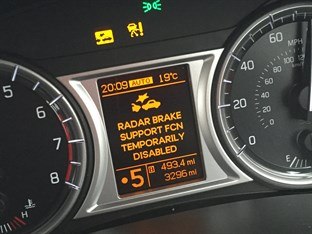
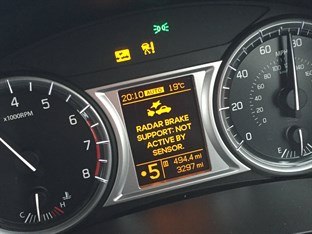
So when I found out that that my Vitara was being recalled, despite being less than a month old, for an issue with the Radar Brake Support system, I was intrigued by the details and what would be needed to resolve it.
I had a hunch that all was not well a few days before I heard there was to be a recall when two warning messages flashed up: “Radar Brake Support FCN Temporarily Disabled” and “Radar Brake Support: Not Active By Sensor”. It was essentially the car’s way of letting me know that I was on my own and not to rely on the radar brake, which detects the vehicle in front when driving at low speeds in heavy traffic. If it senses that you could be about to crash into the car in front, it sounds a (quite irritating) buzzer and flashes up a warning on the information panel. In worst case scenarios it will even do the braking for you, to at least minimise if not necessarily avoid a collision.
As with Celerio earlier in the year, Suzuki was quick to get the car in and let me know that it affected 1163 Vitara SZ5 models. The official reason for the recall is “Due to an error in production the Radar Brake Support System may not have been correctly programmed. In certain instances the system may not recalibrate and could cause unnecessary braking.”
So, has it worked? Since the Vitara returned from its 30 minute rectification work I haven’t seen the warning messages again and the braking seems to kick-in as expected. So far, so good.
Details of the Suzuki SZ4 Radar Brake Support Recall
| Launch Date | Recalls Number |
Make and model | Concern | VIN Start | VIN End | Build |
|---|---|---|---|---|---|---|
| 07/08/2015 | R/2015/165 |
SUZUKI Vitara |
unintended vehicle braking | TSMLYD21S00100991 | TSMLYD21S00120790 |
07/01/2015- 06/05/2015 |
| 07/08/2015 | R/2015/165 |
SUZUKI Vitara |
unintended vehicle braking | TSMLYE21S00100229 | TSMLYE21S00120760 |
07/01/2015- 06/05/2015 |
| 07/08/2015 | R/2015/165 |
SUZUKI Vitara |
unintended vehicle braking | TSMLYD81S00101292 | TSMLYD81S00120818 |
07/01/2015- 06/05/2015 |
| 07/08/2015 | R/2015/165 |
SUZUKI Vitara |
unintended vehicle braking | TSMLYE81S00100232 | TSMLYE81S00120750 |
07/01/2015- 06/05/2015 |
Charging through Dartford
Our Suzuki Vitara impresses on the motorway, but a penalty for the Dartford Crossing doesn't.
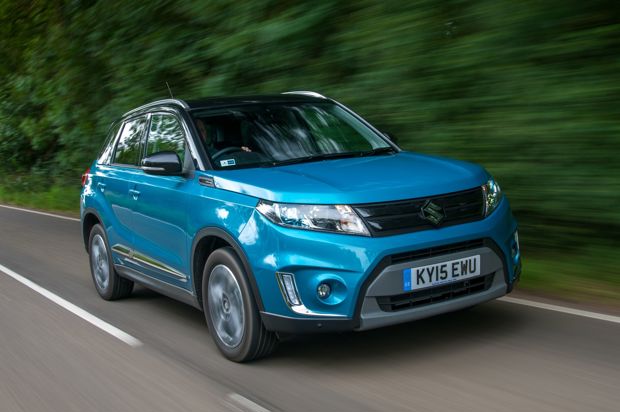
Date: 28 October 2015 | Current mileage: 4578 miles | Claimed economy: 50.4mpg | Actual economy: 46.8mpg
A large chunk of my driving is on dual carriageway and motorways, so that’s where I’m going to start my first update on how I’m finding the Suzuki Vitara out on the road.
The long and short of it is: so far it’s so good. Comfortable, refined and able to munch up motorway miles without a fuss. The 1.6-litre petrol engine settles down at around 2750rpm in fifth gear at 70mph and the radar-assisted cruise control can take some of the sting out of longer trips or help you stay the right side of the law in average speed camera areas. It cruises well, is relatively quiet, has supportive seats and the entertainment system - with DAB, Bluetooth connectivity and USB - offers plenty of choice to break the monotony in traffic jams.
On the motorway I have so far been seeing 52-55mpg and around three quarters of the miles I’ve done since the Vitara arrived have been on motorways and dual carriageways.
An issue I have noticed is that the rear visibility is proving to be a bit of an issue. Those rear pillars are quite chunky, the rear screen is small and, although the quarterlights let the light in, they don’t offer much of a view. It’s not an issue on the motorway, as there isn’t a blindspot, but when manoeuvring, it’s often the case that you’ll need to rely on the reversing camera (which is excellent thanks to a wide view on the big LED screen) and sensors more than you may like.
As so much of my driving is on the motorway, it’s surprising that I managed to drive through the Dartford Crossing without paying the charge. It was one of those occasions where I went over late in the evening and thought to myself “ I must make sure that I pay that tomorrow…” and then promptly forgot.
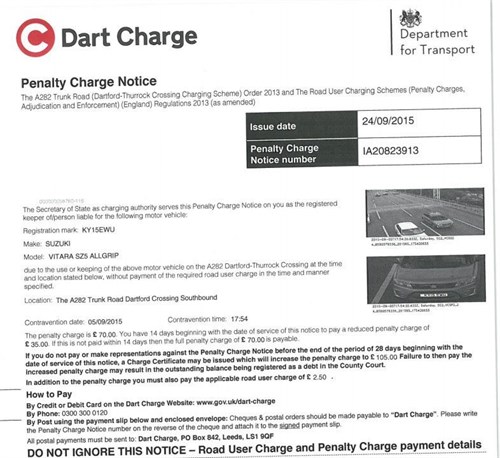
The only thing that jogged my memory was getting a notice (see above) to say that a few weeks before I’d been across the Dartford Crossing without making a payment. Cue the usual panic that goes with these letters.
An initial scan showed that I now owed £70, plus the original £2.50 charge, which left me cursing myself and vowing never to make this expensive mistake again. Then I read a little further and it dropped to £37.50 if paid within 14 days … which sweetened the pill.
Then I spotted that if it’s your first ‘offence’, you can settle-up the original £2.50 and ignore the fine. In an age of mega parking fines for even the smallest infringement and an expectation that penalty charges like this are nothing more than a cash cow, it was a very welcome surprise. That said, I didn’t quite believe it until I went to the website, punched-in my details and coughed-up the £2.50.
So, it’s a gentle nudge rather than a slap across the wrists for forgetful drivers like me. The Dartford Crossing gets the fee it should have and I’m not left with an unnecessarily large bill. And I don’t think I’ll be so forgetful in future. It’s an example that other organisations could do with following.
Reinventing the spare wheel
This is the first Vitara to be launched without a spare wheel on the back. Where has it gone - and why?
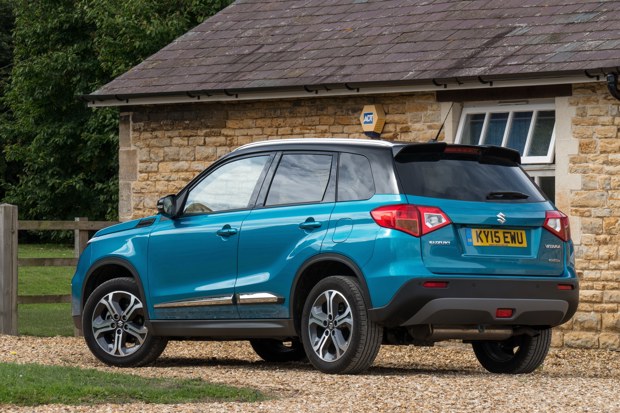
Date: 10 November 2015 | Current mileage: 5978 miles | Claimed economy: 50.4mpg | Actual economy: 47.2mpg
There was a time when the Vitara was synonymous with a tailgate-mounted spare wheel. And the accompanying spare wheel cover. Often something ‘humorous’ or ‘risque’ featuring two rhinos…
Having the spare wheel on the tailgate shouted ‘off-roader’ and came to symbolise that the Vitara was anything but an ordinary run-of-the-mill hatchback. But fashion is a fickle beast and although many manufacturers followed the trend of having a spare wheel on the back during the 1990s and early 2000s, by the the later half of the 2000s it had started to feel a little dated.
The crop of ‘crossovers’ kicked off by the Qashqai of 2008 finally put paid to it. These popular cars combined the high driving position of previously-popular off-roaders with the driving experience of your standard hatchback. And hoofed the spare wheel under the boot floor.
The Grand Vitara - as it was then - quietly lost its tailgate-mounted spare wheel when the it was facelifted in 2013. No fanfare, no big announcement. The idea was to bring it more into line with the growing range of crossovers. The wheel was replaced with a can of foam and an inflation device. That’s still the case on the new model, which is a fully-fledged member of the crossover club - though there is space under the boot cover for a proper spare wheel as well. It’s a subtle admission from the manufacturer that they don’t expect most owners to make use of the off-road capability. A can of ‘gloop’ won’t be much use if the sidewall is torn by a sharp rock on an rough unmade road...
Removing the spare wheel from the tailgate does have some tangible benefits. Firstly, it certainly makes it a more practical proposition for families. The weight of the spare wheel on the tailgate had the side-effect of making it heavy to open plus it had a habit of getting in the way.
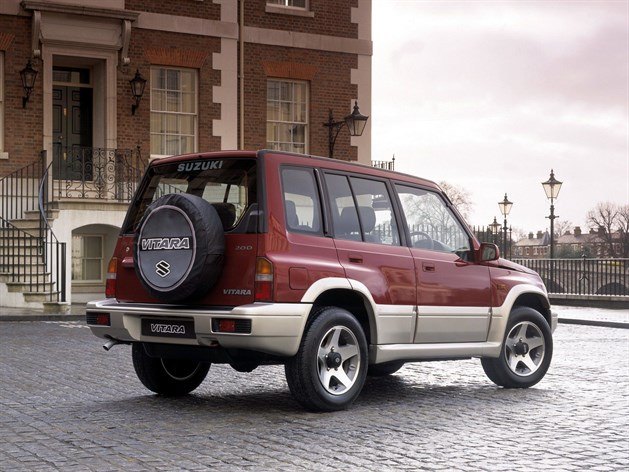
Classic Vitara complete with spare wheel and cover. No rhinos though...
Spare wheels are a real hot button issue with Honestjohn.co.uk readers. Car makers have been removing as much weight as they can from their cars. The reason for that is that after decades of cars getting bigger and heavier (due in part to better safety systems and stronger structures), the trend is now to cut weight wherever possible. The reason is that weight has a direct influence on fuel economy and CO2 emissions, so the lighter the car, the better its fuel economy. With a spare weighing around 20kg, it’s easy pickings when it comes to trimming the weight.
Cut 100kg from the car’s weight and you will bring its CO2 emissions down by 9g/km. That’s a hefty saving which could have serious tax implications for its owner. Get that figure down and the car suddenly looks more attractive for a wider number of buyers and that’s bound to have a positive impact on sales.
So you can see why many manufacturers have done away with spare wheel over the years and why, when they end up stuck at the side of the road, owners have been so annoyed that the spare wheel has become a space saver, which has in turn become a can of tyre-sealant ‘gloop’ - useless if the tyre has more than a nail-prick puncture.
Many owners don’t actually know what kind of back-up they have if they get a puncture - whether it’s a full-size spare, space saver or repair kit - until it’s too late. This blissful ignorance means many end up up the side of the road fumbling with a puncture repair kit in the dark.
For those who want the peace of mind of a full-size spare for the Vitara, the well in which the spare sits is large enough to house one, which isn’t always the case these days. As punctures have a habit of happening at the most inconvenient time possible, in the rain and on a road that’s dirty, I just hope I never have to use it.
Although the Vitara has now fallen into line with its contemporaries, it doesn’t mean that tailgate-mounted spare wheels have been consigned to the dustbin of Suzuki history. The spare wheel on the Jimny is still in the same location as it was when it first went on sale in 1998 (yes, it’s still on sale now in 2015 and one of the ‘oldest’ new cars that you can buy) and there’s no sign that it’s going to change soon.
Fuel for thought: Diesel or petrol?
Dan chews over the stats to show whether petrol is a better bet over diesel in a Vitara.

Date: 8 December 2015 | Current mileage: 6785 miles | Claimed economy: 50.4mpg | Actual economy: 48.1mpg
At HonestJohn.co.uk we have a range of tools and calculators to help you buy the right car at the right price and, once you have that car, we help you run it efficiently and economically.
One of the most useful of those tools is our Fuel Calculator. This shows you which is the best fuel for you, based on the miles that you cover and the cars you’re thinking of buying. It answers the questions that taxes many car buyers: should I opt for diesel or petrol? And it does a proper job of answering, crunching fact and figures; you won’t be given a trite answer along the lines of "The petrol engine is great in the city, but for the motorway opt for a diesel".
So, how does the Suzuki shape up? I compared it to similar engines and specs: a 1.6-litre diesel and 1.6-litre petrol, both in SZ5 Allgrip spec.
Elsewhere on the site, we have done many comparisons of different engines and specs within the same model ranges. Some car makers put a ridiculous premium on diesel engines, which virtually wipes out any potential saving from greater fuel economy.
That’s not the case with this Vitara comparison (see workings below), where the diesel (assuming that all variables remain constant during the period of ownership) starts to pay for itself after just 55,000 miles. For many buyers that still means that it will effectively never pay for itself - with an average mileage of 10,000 miles per year, the owner won’t see any savings until five and a half years into ownership.
By that time they may well have sold the car. But, for the higher mileage driver, the savings could be there in little more than two years, if you’re covering 20,000 or more miles per year. That can’t be said for all models, our analysis into petrol-v-diesel shows that diesel versions of some cars will never pay for themselves.
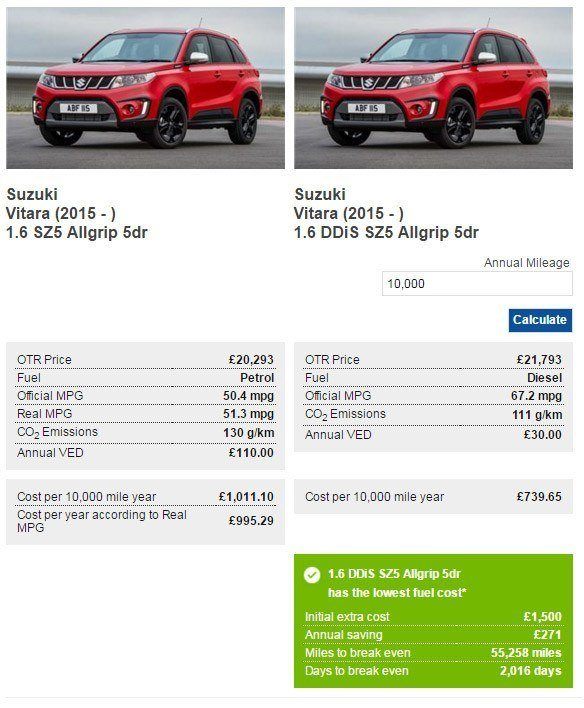
With national average fuel prices hovering at the £1/litre mark, we’ve assumed petrol at 99.9p per litre and diesel at 1.04 per litre. That’s interesting in itself. During the past five years, the gap between petrol and diesel prices has been as high as 10p per litre, but that gap has been narrowing, making previously unaffordable diesels make more sense - especially for higher mileage drivers.
But what kind of fuel consumption are you likely to see in everyday driving? It’s important to know, as if the Real MPG figures for the Vitara’s diesel and petrol engines are closer than they appear, it will have a significant impact on how far you’ll need to drive before it makes economic sense.
Despite only being launched in the first half of 2015, we’re already starting to see submissions for Vitara trickle in from our army of Real MPG users. On the whole, Suzuki is a bit of goody two-shoes when it comes to stated fuel economy - according to our readers - coming in at an average of 90 per cent of the official figure. We’ve noticed similar with Honda and Toyota too, pointing to a trend in which Japanese manufacturers aren’t gaming the system in the same way as others.
There’s a bit more of a mixed picture with Vitara - but you do need to bear in mind that it’s early days and a single submission can have a significant impact on the overall score. Cars with the 1.6-litre petrol engine and two-wheel drive are achieving 47.7mpg - that’s 93 per cent of the official figure, while those with the 1.6 and Allpgrip all-wheel drive are doing better than the official combined figure at 51.3mpg.
Adding an automatic gearbox looks as though it causes a bit of an issue, bringing the average down to 40.1mpg (78 per cent of the official figure), while the diesel has been reported to do 60mpg, against the official 70mpg.
For what it’s worth in a mixture of driving over several thousand miles, I have seen an overall consumption figure of 48mpg, which is within touching distance of the official 50.4mpg.
It’s worth noting that our Fuel Calculator also takes Real MPG into account when making its calculations and shows the knock-on effect it has not only on the number miles you will have to drive before breaking even, but also the associated costs. We don't have the figures for a 1.6-litre diesel with Allgrip yet, but the stats for the diesel without Allgrip suggests that the annual saving from opting for diesel will be closer to £180, rather than the £270 above.
What have our readers been asking about the Vitara?
The Suzuki Vitara is a regular question topic among our users. So what have they been asking?
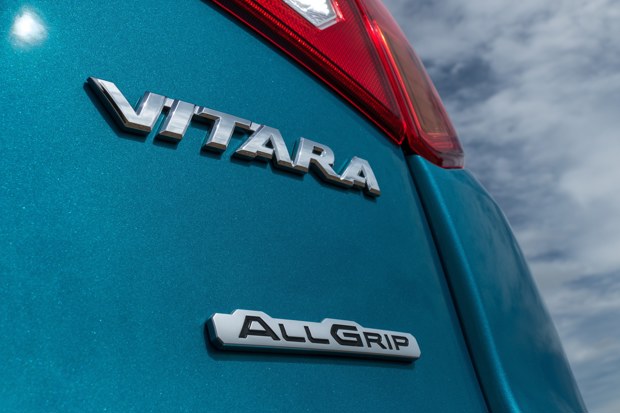
Date: 5 January 2016 | Current mileage: 7182 miles | Claimed economy: 50.4mpg | Actual economy: 49.3mpg
The backbone of this site relies on users like you asking us questions before you buy a car and keeping us informed about the ownership experience: everything from its fuel consumption and what goes wrong, to the sort of service you receive at your local garage.
The Vitara is regularly the subject of the questions that Honest John is asked. It’s a car that he’s really keen to recommend to readers thanks to its all-round value appeal, particularly in 1.4 BoosterJet form, which transforms its driving experience.
The types of questions that we receive fall into a couple of broad categories: Buyers looking for a crossover and those who know they want a Vitara and want some more in-depth advice.
The kind of typical questions that HJ is asked is:
Tags:buying a used car SUVs
 Answered by Honest John
Answered by Honest John Answered by Honest John
Answered by Honest John
Following on from the "Should I buy this, or should I buy that?" type of questions, some users ask about the practicalities of owning the car, usually very specific to their own circumstances. The reader below is looking for a car for all seasons...
Tags: Suzuki Vitara 2015
 Answered by Honest John
Answered by Honest JohnAsked on 13 January 2016 by Pov
 Answered by Honest John
Answered by Honest JohnTo see all of our Suzuki Vitara Ask HJ Q&As, click here


